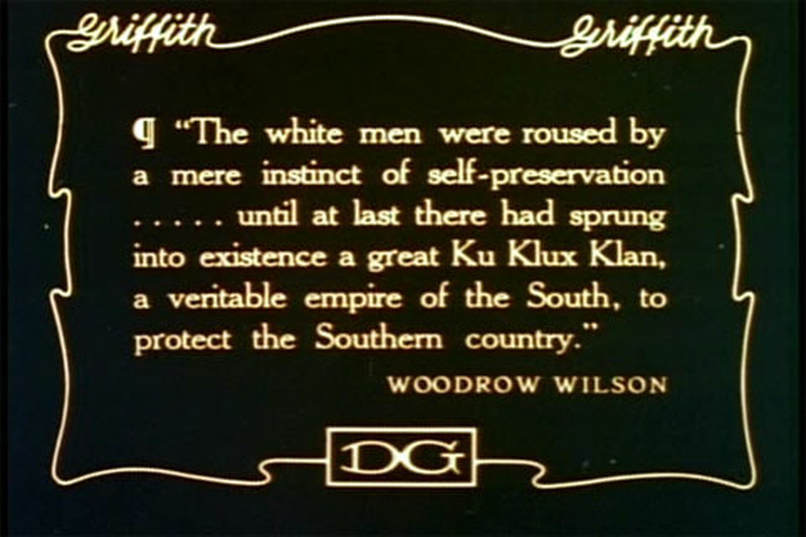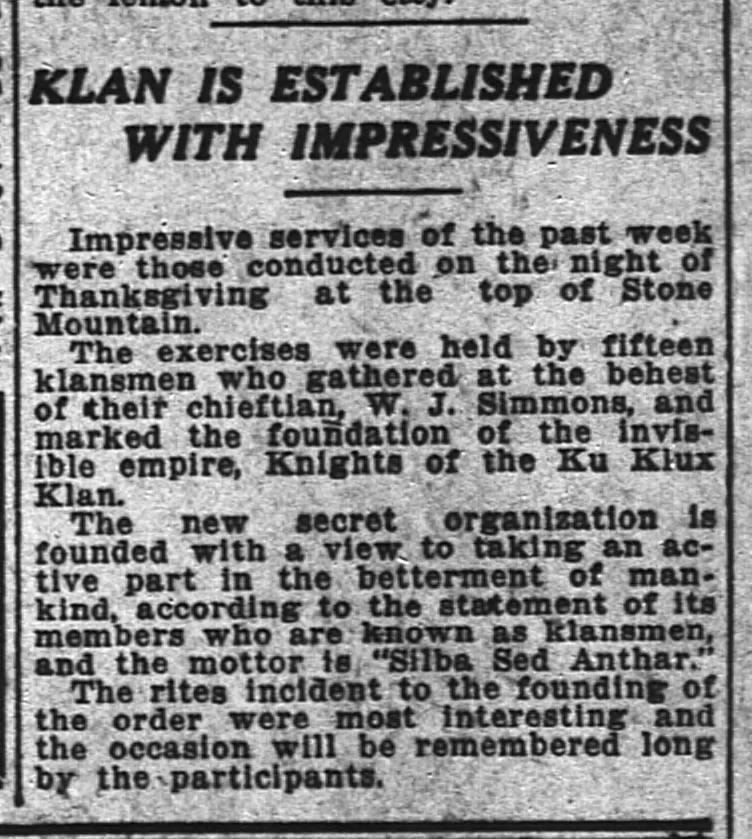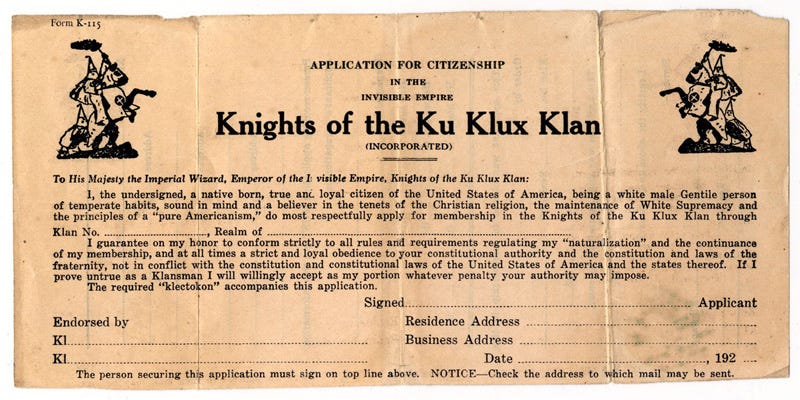The History of Stone Mountain and the KKK - Part One
105 years ago the second KKK was birthed here at the largest attraction in the state of Georgia
Welcome to my freemium newsletter by me, King Williams. A documentary filmmaker, journalist, podcast host, and author based in Atlanta, Georgia.
This is a newsletter covering the hidden connections of Atlanta to everything else!
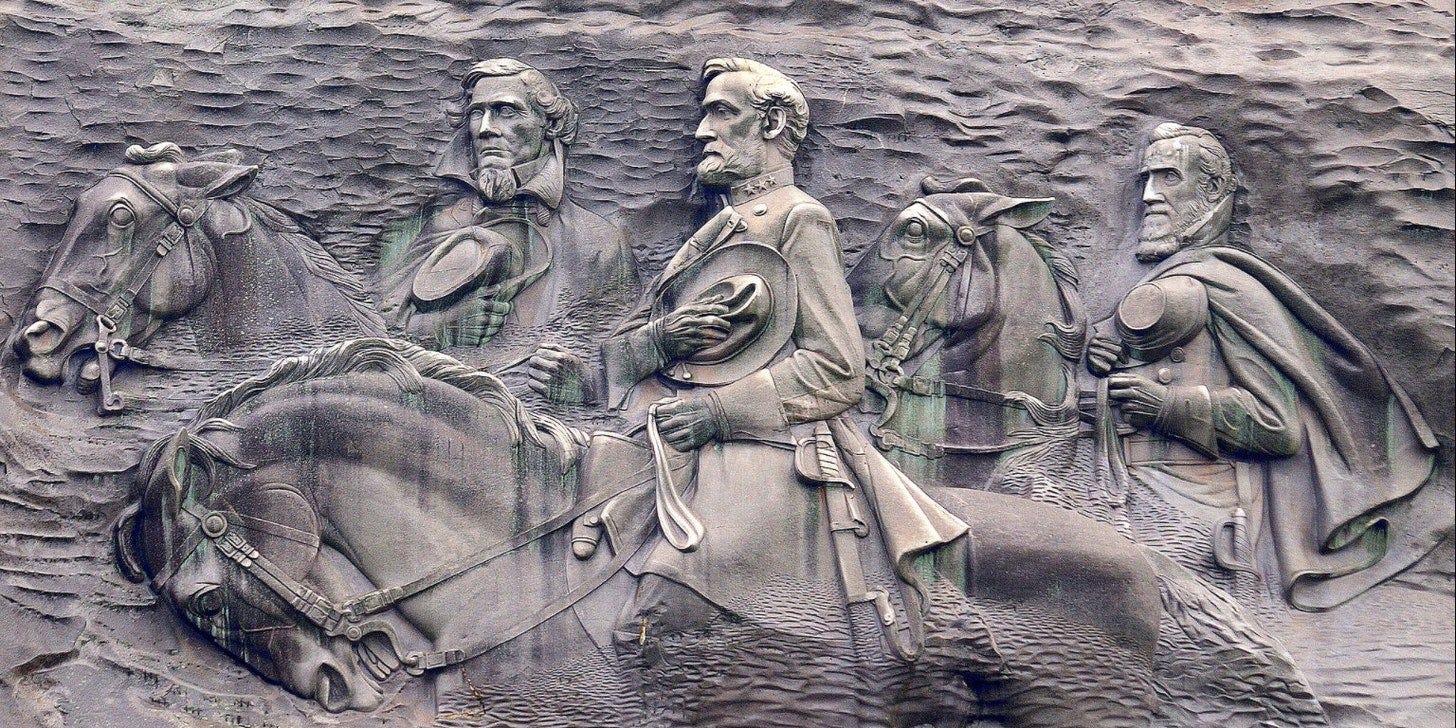
Written by King Williams
Edited by Alicia Bruce
As we welcome 2021, there were some articles that for a host of reasons I did not put out in 2020. So for the month of January, I’ve decided to release a few articles that I feel are worth taking a look at. This article is on the history of Stone Mountain and the Klu Klux Klan, one of the longest-running terrorist groups in the world.
I initially wanted this to come out on Thanksgiving but largely shelved it as I felt it was a bit too much to read during a year that already has been a lot. I decided today was a good time to bring this one out and would love to hear your thoughts!
-King
Stone Mountain and the History of the KKK
November 25th, 2020, marked the 105th anniversary of the second founding of the Klu Klux Klan, America’s largest and most-known domestic terrorist group. The second founding of the KKK was right here in metro Atlanta, at the edge of DeKalb County in the small town of Stone Mountain, Georgia, on November 25th, 1915.
In the wake of a rise in white nationalism over the past year, it’s time we look back at the role Atlanta has had in perpetuating national white supremacy.
What is Stone Mountain, Stone Mountain Village, and Shermantown?
This video mentions nothing about the actual history of Stone Mountain, but that’s the point.
Stone Mountain
Stone Mountain is a small suburban town at the end of the county line of DeKalb County, and socially for decades represented the end of metro Atlanta.
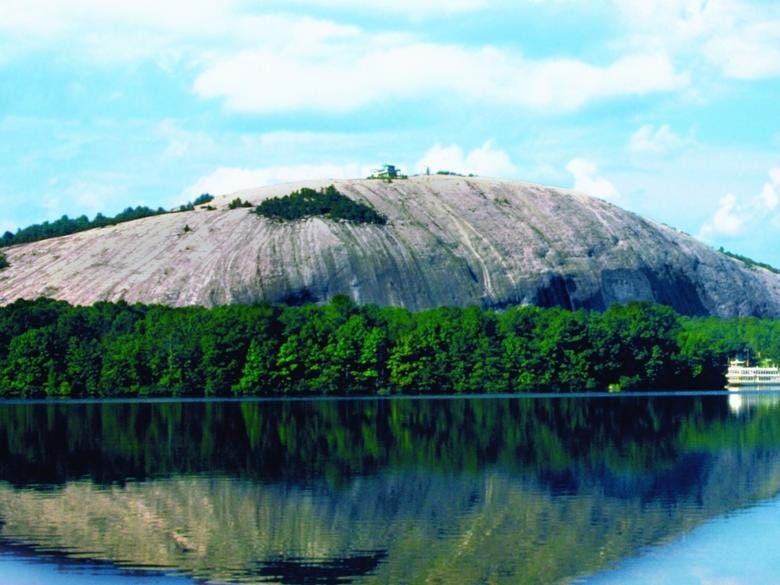
Stone Mountain is a large stand-alone rock formation that predates all of human history and even predating the dinosaurs by a few hundred million years. In pre-colonization, the site was used by Native American groups the Creek Federation and the Cherokee. By the 1800s the site became the recreation point for the newly formed DeKalb County, something that continues nearly 200 years later. Because of the abundance of varying rock formations, the site has been used as a rock quarry, and a pivotal stop for the railroads for over a century until it became a state-owned memorial for the Confederacy in 1958. It also for the last 100+ years also been a tourist attraction, often bringing out Atlantans for a single-day getaway from the city.
Stone Mountain Village
After the passage of the Indian Removal Act of 1830, alongside the removal of Native Americans from Georgia, due to the Trail of Tears, white settlers (often accompanied by their slaves), began to officially settle in Stone Mountain. The town around the mountain was originally dubbed ‘Rock Mountain’ before being officially renamed ‘New Gibraltar’ and lastly being named Stone Mountain in 1847.
The site was famously burned to the ground during the Civil War during ‘Sherman’s March to the Sea’, and resulting in the reforming of Stone Mountain. Stone Mountain Village is currently the main street of the city of Stone Mountain and resides one scenic mile outside of the park.
Shermantown
The resulting freed slaves during this march to the sea would form ‘Shermantown’ named after General William T. Sherman. The reformed Stone Mountain Village became a new home for abiding false narratives of the Confederacy ever since. What makes Shermantown different is that it is one of the few continually operating places in Atlanta that’s had a Black population dating after the Civil War. But like many places in metro Atlanta, most of this Black history has been destroyed for various reasons including real estate projects and urban planning.
What is the KKK?
Originally founded in Polaski, Tennessee on December 24th, 1865, the terror group was founded by former confederate soldiers at the end of the Civil War. The Ku Klux Klan was NOT created by the Democratic party. But its first iteration comprised mostly of southern Democrats but these are not the same Democrats of today’s political party. As ideological switches over the next hundred years, especially regarding the civil/legal rights of African-Americans caused southern whites to abandon support of Democrats in favor of Republicans beginning in the 1960s.
1) The first era of the KKK: Anti-Black backlash to Reconstruction and the end of Civil War
Originally the KKK was formed after the civil war during the Union occupation of the south. The KKK’s growth during the first era came during reconstruction. This was a backlash to the perceived gains of former slaves as a result of programs and initiatives for African Americans during reconstruction.
This was accompanied by the rise of anti-Black social norms/local legislation known as ‘the Black Codes’, which often were implemented by force. These black codes in combination with Jim Crow laws, the rise of convict leasing, and for-profit prison labor were often used by southern whites who wished to maintain ‘order’. Maintains order also included the Klan’s use of voter intimidation tactics, as well as a combination of local/state-level voter suppression laws. And when those didn’t work or whenever these codes were being threatened, the Klan was called to restore this ‘order’.
The resulting violence and terrorism against African Americans were so severe that the US government had to use active force against the Klan. Under then-President Ulysses S. Grant, the US enacted three federal laws including the Third Enforcement Act of 1871, better known as the KKK Act to stop the Klan. These three acts allowed for federal troops to oversee aspects of the south including voting, combating, and apprehending known Klansmen. These Klansmen were fined and also put in jails comprised of juries containing African Americans. This period of federal intervention on behalf of federal law enforcement during Reconstruction would also represent arguably the most successful time period of law enforcement relations with the Black community ever in the US.
By the end of 1872, the Klan was all but eradicated throughout the south. This would be short-lived, as everything would change after the release of Hollywood’s first blockbuster film 43 years later.
2) The second era of the KKK: The first Hollywood blockbuster + openly racist President Woodrow Wilson in 1915
The rise of the second era of the KKK can be attributed mostly to one movie, D.W. Griffith’s film ‘The Birth of A Nation’, the first recorded blockbuster film in US history. The film is an exercise of dog whistles, stereotypes, and contains many of the same notions of anti-Black racism we see in political/media campaigns today. And that second era was started right here in Atlanta in November of 1915, less than a year after the premiere of filmmaker D.W. Griffith’s groundbreaking film.
Director, D.W. Griffith
D.W. Griffith was the director of The Birth of a Nation, he is credited as being not only a pioneer in film history but also the creator of the modern Hollywood blockbuster. Prior to directing The Birth of a Nation, Griffith built his career directing over 400 short films during the silent era.
Griffith’s father himself was a former Confederate soldier and like many southern whites, grew up with the false narratives of ‘the lost cause’ myth. According to Griffith, in a preserved interview clip that can still be found online, he states the Klan was ‘needed’ at that time; often echoing sentiments of southern whites who saw the Klan then (and now) as vigilante heroes. The Klan’s use of violence was seen by many whites as justifiable against the perceived lawlessness and uncivilized nature of African Americans.
The Birth of a Nation
The film is based on the 1905 novel, The Clansman (which is available on Amazon), a second in the trilogy series, by writer Thomas Dixon, set in the Reconstruction-era southern United States. The Clansman was originally attempted to be adapted for the screen in 1911, becoming one of the first films ever to be shown in color. But the film was never completed, nor received the funding to do so. After that failed attempt, Griffith and Dixon would attempt a second time to bring the story to cinemas, with this second attempt being the most successful film of all-time for nearly 25 years.
In both the novel and the film, the Klansmen are portrayed as heroes who must stop the overtaking of the South by newly freed slaves. Dixon’s book was quickly accompanied by a stage play, which often was met with both protests and race riots wherever it was shown. This stageplay was also being shown in Atlanta at the same time as the start of the 1906 race riot, with some historians attributing the play to inflaming racial tensions. By the time the film was to premiere a decade later, it was Hollywood’s first successful multiplatform IP, decades before Disney and the Warner Brothers would even establish this business model.
The first superhero on screen was the Klansman, and ever since then, the cinematic point of view of American heroism has been mostly focused on preserving this interpretation. This portrayal as heroes led played directly into notions of white racism and the belief that this film was a form of ‘true history’.
The Klan was not only seen as heroes, they became symbols of justice.
President Woodrow Wilson
Woodrow Wilson was the 28th president of the United States. He was born in Virginia but primarily raised in Augusta, Georgia.
Wilson did not leave the south until college, where he attended John Hopkins University in Baltimore, Maryland. Wilson became the first southerner since before the start of the Civil War to become president. While Wilson’s election to the presidency as a result of a third party split within the Republican Party courtesy of Teddy Roosevelt's third attempt at running for president. As a result, Wilson won with the lowest percentage of the president since 1860. Wilson in many circles is considered one of the best presidents in US history, as he established the federal income tax system, Federal Trade Commission Act, and the Clayton Antitrust Act, in addition to aiding in establishing the League of Nations to name a few.
Wilson was also undeniably racist—even by 1914 standards. His father was a chaplain of the Confederacy, was raised by slaves as a child through his father’s church, believed slavery was benign, and a big believer in the lost cause myth. Woodrow Wilson also believed Reconstruction was for the inferior race, voted against recognizing racial equality a global goal at the Versailles Peace Treaty, and was against women’s suffrage as well. But this man was elected president of the United States…twice.
Upon his election, many segregationists lauded the choice as he supported the Klan, was pro-segregation, and quite bigoted. Under Wilson’s tenure, he resegregated civil service, refused to commission new African American military officers, purposely did not intervene in the massive race riots throughout the US, placed open bigots to the Supreme Court, and placed segregationists throughout his cabinet. Wilson used his presidency to put African Americans further back by purposely aiding in denying or segregating federal government jobs, often one of the few opportunities for African Americans.
Wilson and The Birth of a Nation
Wilson was also the first president to play a movie in the White House and that movie would be a three-hour epic on white nationalism. Dixon and Wilson were both classmates briefly at John Hopkins University in Baltimore. Dixon would later drop out due to lack of funds and would join the arm services. But Dixon would use his connection with Wilson later in life, as himself alongside Griffith would be the first to have a film shown inside the White House in February of 1915.
Wilson is often cited as saying the film was like “history, told as lightning in a bottle”. But here’s the thing, that may have not happened…at least not in the way it’s colloquially remembered. According to a newer generation of scholarship on this subject as well as a biography on Wilson by Muhlenberg College professor Paul McEwan.
Newer scholarship suggests that while the film did indeed screen at the White House, Wilson himself wasn’t particularly fond of the film. That quote attributed to Wilson and the film was not associated with each other until years later according to professor McEwan. The quote seems to be a product of Dixon’s own press agent at the time. Additionally, Wilson’s own words directly used within the film were also not direct quotes about the film but rather were taken from Wilson’s own book History of the American People. The trifecta of the film being the first screened at the White House, the quote from the book used in the film’s title card, and the planted quote aided in verifying the legitimacy of the film for audiences.
Atlanta influences everything, this time it was the Klan
The second rise of the Klan was arguably the biggest.
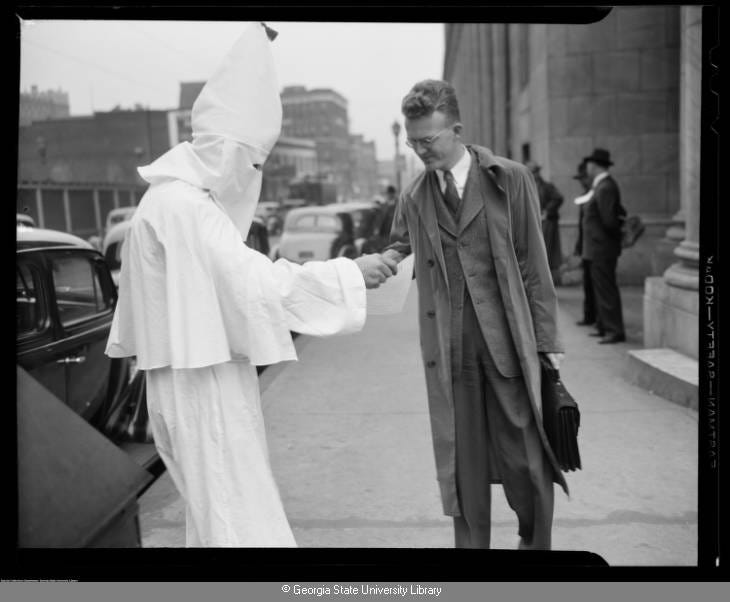
The second rise of the Klan is the largest infiltration of white nationalism in US history and Atlanta has a lot to do with it. What made this iteration different is the reliance on being ‘American’, with a broader scope of white nationalism combined with anti-Black racism and anti-WASP (White Anglo Saxon Protestant) sentiment.
The Klan’s rise was being aided by an increase in newly arriving European immigrants, anti-Black animosity, belief in the false ideals of ‘the lost cause’, revisionist history of the civil war/reconstruction, and an increase in economic inequality brought by industrialists.
In Atlanta, this combination of white racism, anti-Jewish, and rising anti-immigrant sentiment boiled over into the lynching of Leo Frank. Frank was a Jewish employee falsely accused of murdering Mary Phagan. Frank was sought out by a mob of angry whites who eventually lynched Frank in Atlanta on August 16th, 1915.
Since that day for 104 years, either the Klan or their supporters would march to the top of Stone Mountain and hold festivities. That stopped this year as the park closed due to ongoing racial tensions and surge in Black Lives Matter-inspired protests. But several armed white supremacists still showed up in Stone Mountain Village to wave flags and antagonize counter-protestors.
This lynching of Leo Frank, the growing anti-immigrant sentiment, and ongoing anti-Black sentiment became the impetus for Methodist minister William J. Simmons to restart the Klan on top of Stone Mountain in November of 1915. It’s also here that the first recorded cross burning would take place in the US as a direct reference to the cross burnings used in The Birth of a Nation in addition to the first use of the white robes associated with the Klan today.
The KKK was also a multi-level marketing scheme, seriously
Before a thing such as ‘financial freedom Twitter’ existed, before the get rich quick books, before multi-level marketing schemes, there was the KKK.
The second iteration of the KKK was floundering financially despite the initial boom from The Birth of a Nation. The Klan needed to recruit more members in order to keep the organization afloat, floundering financially for the first few years. It wasn’t until Simmons entered a partnership with Edward Young Clark and Elizabeth Tyler of the Atlanta Southern Publicity Association that the group really hit new levels.
Operating out of the Flatiron building in downtown Atlanta, the group began charging memberships, issuing a promised cut of revenue to members who brought in new members. Within four years the group goes from a few hundred in Atlanta to 4 million across the US. By 1925 the Ku Klux Klan would have enough voting power to tip the US presidency in 1924 as well as several state and local level elections. The Klan built off of already established racial animosity and monetized it to its maximum point.
The KKK remodeled into a respectable ‘social club’
One additional byproduct of the Klan reaching new heights in the 1920s was its ability to appear as just as respectable as any other social club.

By 1924, the Klan claimed members in all 48 states, with states outside of the south such as Indiana and Oregon being more active than some of their southern counterparts. The Klan wasn’t seen as fringe, as open segregation, Jim Crow, and other forms of policing African Americans were seen as the ‘natural’ order of society.
This new version of the Klan was about both racial terror and being a full-fledged white social club. Social clubs, fraternal organizations, and secret societies were abounding throughout the Jim Crow south. Simmons, the Klan’s second iteration founder, had already been in nearly a dozen social clubs prior to re-establishing the terrorist group. This version had expanded to include a system of chapters called ‘Klaverns’, membership dues, merchandise, a children’s indoctrination funnel, a summer camp, recreational baseball teams, and a women’s organization.
The peak of the KKK was in the 1920s and nothing was the same
Within 10 years of the Klan’s second birth on the top of Stone Mountain, the Klan would manage to infiltrate every aspect of local, state, and national government across the US.
At its peak, the Klan would have over four million registered members and played a major presence in the presidential election of 1924. Including the beginnings of the switch of African Americans from within the GOP, the early stages of the white exodus from the Democratic Party, and the eventual embrace of the Republican Party towards more radical conservatism.
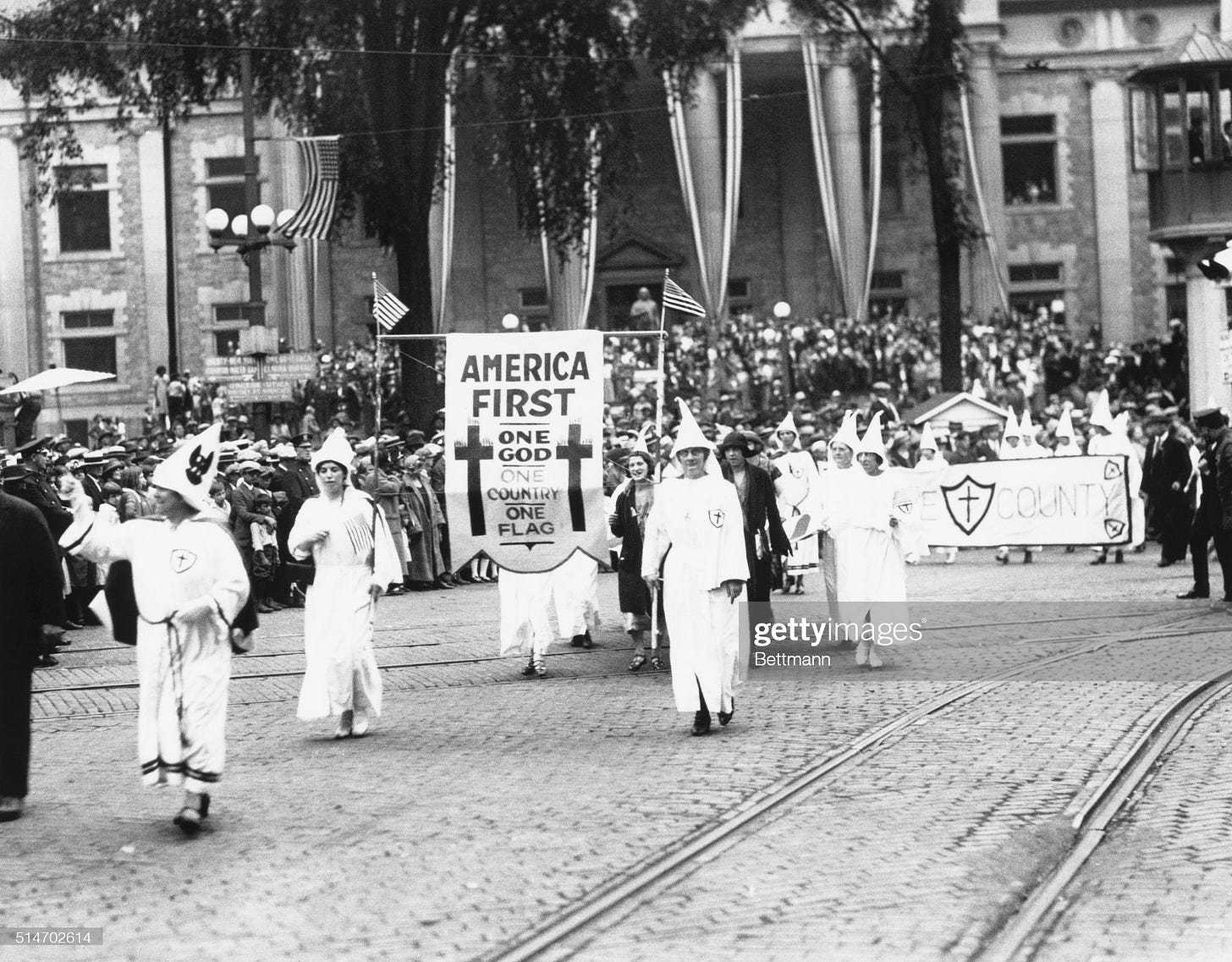
These Klaverns and its members were often also attacking immigrant groups including Jews, Catholics, and Chinese Americans. For nearly a decade the Klan was mainstream America and did not take a major hit reputationally until a series of scandals hit the organization beginning in the 1920s. Once the scandals and changes in leadership, the organization mostly faded from national prominence by the 1930s, dwindling significantly by the start of World War II but remained strong in the south.
African Americans took the worst punishment from the Klan, the police, and their supporters during this time
This period of time was also one of the biggest periods of physical violence and property damage against African Americans in recorded US history.
The 1910s and 1920s saw ongoing riots, mass lynchings, and the largest purposeful destruction of Black neighborhoods ever. This period saw the near-permanent crippling of Black wealth and the largest loss of land ownership in African American history. The Klan was a defacto buffer for ‘civilized’ white society, doing much of the dirty work in destabilizing and terrorizing African Americans for nearly a century. These attacks by the Klan were seen as the justifiable thing to do.
The Klan and the Police
The Klan saw a surge in memberships within law enforcement during this period. The integration of the Klan and law enforcement began with the immediate end of the Civil War, continuing even now. But the second period of the KKK saw a surge in Klan and law enforcement nationwide, often with officers participating in all sorts of violence towards African Americans. This included lynchings, falsified police reports, inciting and participating in race riots, often arresting African Americans who decided to fight back, in addition to confiscating their weapons. This included both the police and the national guard confiscated weapons of African Americans who defended themselves during the 1906 Atlanta racial massacre.
The killing of Thomas Finch
In 1936, Thomas Finch, an African American orderly a Grady Hospital was falsely accused of rape by a white woman named Ozella Smith who came to the hospital to treat a broken limb. Smith returned the following day for treatment and left home with no issues. Later that evening Finch was being pulled out of his home in Buttermilk Bottom a former Black neighborhood (present-day Civic Center), at 3 am by two Atlanta police department detectives, Samuel Roper and C.W. Cody who were accompanied by a lynch mob. Finch was taken from his home by the officers, with the caravan of cars of the lynch mob accompanying them. Finch’s body was found an hour later at Grady Hospital, beaten and with three bullets in him.
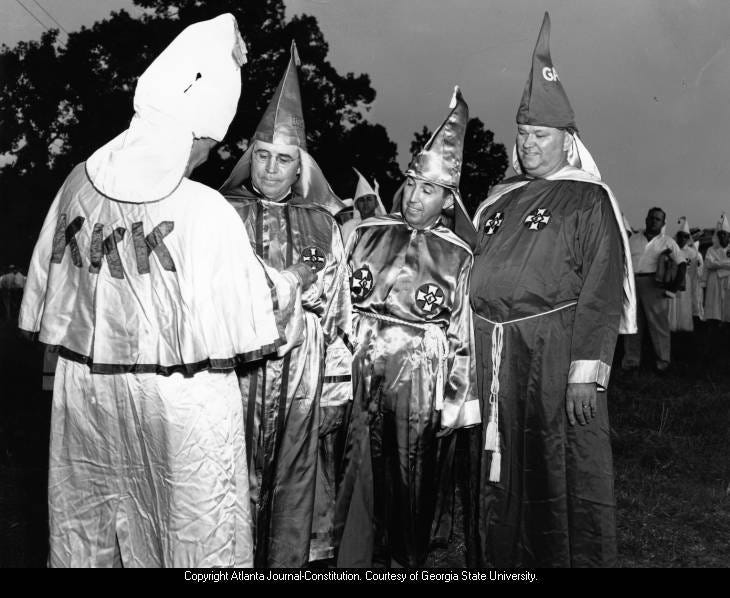
The white press, especially the Atlanta Constitution stated that Finch was shot by one of the detectives in a claimed act of self-defense. While the black press including The Atlanta Daily World and the national paper The Chicago Defender helped to spread the story’s lack of credible facts or justice for the family of Thomas Finch. The black press used their own investigations, the work of and with help of a coroner’s report, that no record of any recorded rape at Grady Hospital, nor the police was ever filed. The black press concluded then, that Finch had been lynched. The case was never investigated and is still unsolved.
Samuel Roper
Roper was one of the millions of white Americans who joined the Klan in the 1920s and one of the thousands who made a career in law enforcement. He was known as Wizard (short for Grand Wizard) Roper, was open in his hatred, even campaigning on behalf of Georgia Governor Eugene Talmage during his 1946 campaign pledging to install Klan members in every county’s police department. Roper would eventually become the second Director of the Georgia Bureau of Investigation and after retiring from law enforcement in 1949. Roper would succeed Samuel Green as Imperial Wizard of the KKK and held that position until 1950.
Stone Mountain and the KKK: Part Two
-KJW
If you haven’t subscribed to my newsletter, please subscribe now. The subscription options include a limited free version, $10 a month, or $100 for the year





